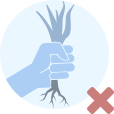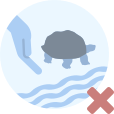
Go to our visitor centres, information points and ecomuseums to get the most out of your visit.
This area covers 70 kilometres and is formed by the lower section of the Guadiana River; from its mouth in Ayamonte, until it receives the waters of the Chanza River. Here it continues until Paymogo, where it connects with the Rivera del Chanza Special Area of Conservation.
Both SACs play an important role in forming an ecological corridor, connecting the coastline with Sierra Morena and other Natura 2000 protected areas that are located on both sides of the Spanish-Portuguese border. It forms a kind of a vertebral axis that connects the Sierra de Aracena and Picos de Aroche with the Isle of San Bruno and the Guadiana River estuary. The latter is of great importance due to the fact that it connects the river areas with the marine areas.
Vegetation on the Spanish side, around the Guadiana River and Ribera de Chanza, is generally very diverse, depending on the use of the areas that border the river. On the borders with agricultural land, it is common to find reed beds, oleanders and brambles. Swathes of churrero reed and annual grasses (Lolium rigidum) appear on the floodplains, and on the forest soils there is scrubland formed of kermes oak, wild olive, carob and mastic trees, Mediterranean dwarf palm and Italian arum. Near the mouth of the river, sea-blite and esparto can be found in the lower areas, having been exposed to prolonged periods of flooding, and Arthrocnemum macrostachyum in the driest areas of the floodplain.
This area stands out for its richness and fish farming diversity, the latter largely responsible for its membership to the Natura 2000 Network. Sea lamprey, Aphanius baeticus, Spanish minnowcarp, Pseudochondrostoma willkommii, Squalius alburnoides, freshwater blenny and Iberian barbel are all found in the waters here. And in the area around the Chanza reservoir, the black vulture. The area immediately around the mouth of the Guadiana River is an Important Bird and Biodiversity Area (IBA) due to the presence of species such as the plover, black tern and Audouin´s gull.
The characteristic fauna of the area is that of the riverbank and the estuary. Species considered bioindicators of the good ecological status of aquatic environments and sensitive to certain environmental changes, such as the otter and Margaritifera auricularia (a species of freshwater mussel) have been detected in the Guadiana River.




Go to our visitor centres, information points and ecomuseums to get the most out of your visit.

Follow the recommendations and comply with the regulations at all times

Respect the facilities put at your disposal. We all pay for its maintenance.

Help prevent fires. Do not throw cigarettes or any other object that produces combustion.

Trash doesn't come back alone. Take it with you to the nearest container. Reduce, reuse, recycle.

Noise is another form of pollution. In silence you will enjoy your experience more.

Live respectfully with the locals and other users. Respect private property.

Facilitate use for people with special needs.

By consuming local products and counting on local companies, you will contribute to rural development.

Practice responsible tourism and committed to the environment. Be a true ecotourist!

Never leave your pet in the wild. It would endanger the flora and fauna of the place.

Get around in a sustainable way: public transport, bicycle, on foot, electric or shared vehicle ... Park in the designated places

Do not leave a trace of your passage through nature. The best memory you can take with you is your own photograph.

Your safety is our concern, but it is your responsibility.

The conservation of natural spaces is also in your hands. Thank you for your collaboration!